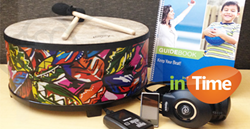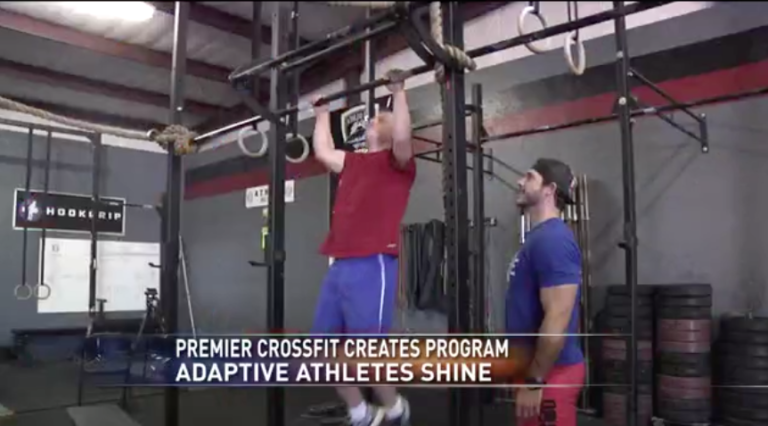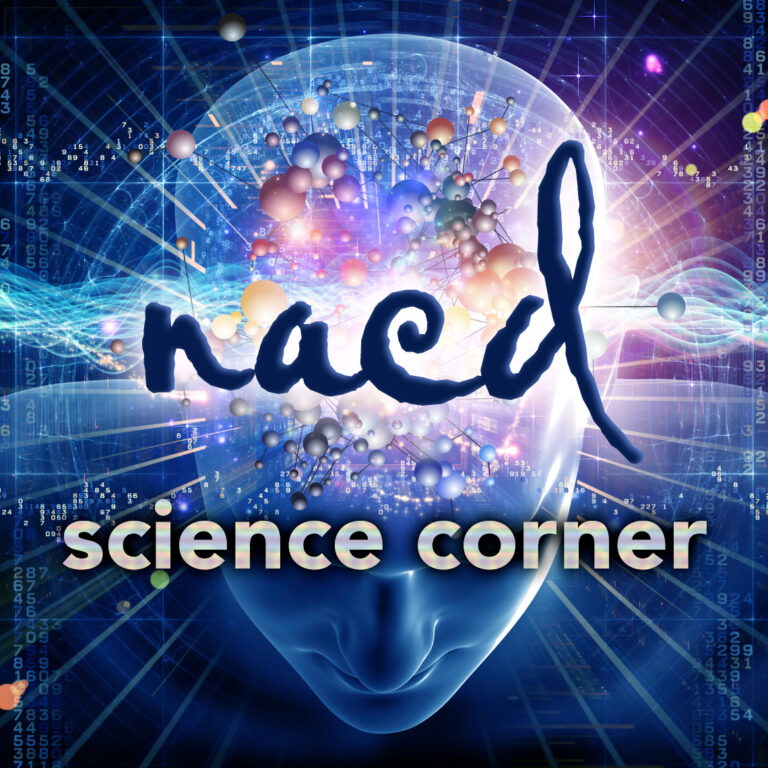NACD’s Preliminary Trial of the inTime Program
by Lori Riggs, M.A., CCC/SLP
Introduction
 The National Association of Child Development (NACD) has many years of experience of using and developing sound-based programs with clients for the remediation of auditory-related issues. From Tomatis to Berard, Joudry, Samonas, and The Listening Program® (TLP), we have gathered observations and information about our clients’ responses to auditory programs for a period spanning many programs and more than 30 years. Always seeking more effective ways to benefit our clients, we have investigated new programs as they became available over the years of evolution of this field of sound therapy.
The National Association of Child Development (NACD) has many years of experience of using and developing sound-based programs with clients for the remediation of auditory-related issues. From Tomatis to Berard, Joudry, Samonas, and The Listening Program® (TLP), we have gathered observations and information about our clients’ responses to auditory programs for a period spanning many programs and more than 30 years. Always seeking more effective ways to benefit our clients, we have investigated new programs as they became available over the years of evolution of this field of sound therapy.
With NACD having put together the development team for the creation of the original TLP, we have been using ABT’s TLP (Classic, then Level One) with great results since its release in 1999. Literally hundreds of individuals have shown improvements in auditory processing and related areas with our use of the program.
Based on our vast experience with sound therapy in general, but specifically TLP, we were interested in the release of ABT’s newest program, inTime, for two primary reasons: 1) It targets specific frequency ranges as TLP does. However, instead of employing low-pass and high-pass filters to achieve this, target frequencies are achieved by the choice of instrumentation. Only instruments whose resonant characteristics include a fundamental frequency that falls into the target range are used. 2) It incorporates rhythm (primarily through percussion instruments) as its primary sound bed. There is currently a quickly growing body of research that underlines the significance, importance, and effect of rhythm on function—motor skills, attention, cognition, speech and language. The work of Nina Kraus at Northwestern University, researching the effects of music and music training on language development, has especially been of interest to NACD, as we continue to use and develop auditory therapies.
Purpose
NACD had a group of our clients use ABT’s trial version of the inTime program to gather information regarding their opinions of the program and their perception of its effectiveness for their children. We were also interested in comparing this to what our observations have been with the use of TLP. It was understood that this was an informal study for the purpose of gathering anecdotal information.
Method
37 NACD clients agreed to participate in the inTime trial. Criteria for inclusion were: 1) currently on a home program through NACD 2) previous use of TLP 3) had the recommended headphones for the program. Before starting the program, parents had an initial phone consult to discuss their goals for the program and the correct implementation. They were instructed to have their child listen via headphones to two 9-minute sessions daily, 5 days per week. The 8-week trial version of inTime contained 50% of the content of the full inTime program. Listeners could sit and listen quietly or could move along with the music as desired. A follow-up call was conducted after 4 weeks to see if the participants wanted to continue for another 4 weeks. (100% of those asked did want to continue.) At the conclusion of the trial, listeners’ parents answered questions regarding how they liked the program, what they liked and disliked about it, what changes, if any, they observed, and how they felt it compared to their experience with TLP.
Results
Of the 37 who agreed to participate in the trial, 27 are known to have completed it. Therefore the group discussed in the remainder of this paper will refer to these 27 individuals. Of the remaining 10, three are still in the process of completing the program at the time of this writing, two have not responded to inquiries regarding their status, one was unable to complete it due to technical problems, one never started the program, two children refused to cooperate for listening, and one completed the program but was not included because their implementation was not consistent with the rest of the group.
Participants ranged in age from 3 to adult, with the majority falling into the 7-11 range. All had completed TLP previously. Diagnoses of participants included: developmental delay, Down syndrome, apraxia/dyspraxia, autism, agenesis of the corpus callosum, and neurotypical. It was felt that the group was representative of the type of NACD clients who generally use TLP.
Parents’ responses to questions asked at the conclusion of the trial are reported below:
1) Did they [the listener] like inTime?
24 out of 27 (89%) Yes
0 No
3 out of 27 (11%) Indifferent; didn’t mind it
2) What aspect did they [parent and/or participant] like best?
- the content
- rhythm/percussion
- Parent liked that the child was more willing to do this than pervious sound therapies.
- easier to listen to [than previous sound therapies]
- “It works.”
- “It was funny.”
- Parent reported: “[Child] actually listened to this [compared to other sound therapies].”
- “I don’t know.”
3) Was there anything [parent and/or participant] disliked?
12 out of 27 (44%) No
1 out of 27 (4%) Child thought some slower tracks were “sad.”
Comments from the other 14 participants all related to technical difficulties they had with streaming the program. It is important to note that the streaming was for the trial only. The actual inTime program is contained on iPod. Therefore there were no complaints besides the “sad” comment that referred to the program itself.
4) What did the listener naturally do during the session?
Most participants listened independently, sitting or lying down, and did nothing else. Some wanted to move with the music or dance, and some beat along with drumsticks.
5) What changes or responses were you aware of that you attributed to inTime? [Note: For most items in the list below, multiple participants reported the response noted.]
- improved conversation and engagement
- more verbal initiation
- more aware of surroundings
- decreased sound sensitivity
- increased coordination
- better rhythm for violin or piano
- better rhythm for dancing
- increased energy
- increase in sequential processing
- improved reading skills
- better volume control for speech
- more confidence for independent activities
- increase in typing speed
- more verbal productions
- more affectionate
- increased language understanding
- decrease in debilitating sensory addictions (self-stim behaviors)
- better eye contact
- quicker response time
- more singing
- “making new connections”
- calmer, more content
- less “stuck” with stuttering
- started babbling for the first time
- dry at night for the first time
- better thought behind actions and comments
- improved articulation
- more “centered”
- improved speech intelligibility
6) How did you feel this compared to your child’s use of TLP?
8 out of 27 (30%) I don’t know
Others
- Hard to say because my child was younger and at a different developmental stage when they used TLP.
- More change with inTime.
- Faster change with inTime.
- The shorter sessions of inTime were better.
- Enjoyed inTime more.
- Easier implementation [inTime].
- Liked it better.
- Was more energizing.
- “Significantly different, but hard to quantify.”
- Preferred this content.
- Child was reluctant to do TLP, but not inTime.
- Child was able to memorize TLP, but couldn’t memorize inTime. (Memorization was a concern in regard to the music becoming a sensory addiction for the child.)
- One reported more change observed with TLP than with inTime.
7) Would you recommend inTime to others?
19 out of 27 (83%) Yes
1 out of 27 (4%) No due to cost
3 out of 17 (13%) I don’t know
8) Did you child achieve your goals for their use of inTime? [Note: Goals were set by parent prior to starting the trial.]
18 out of 27 (67%) Yes
5 out of 27 (19%) No
2 out of 27 (7%) I don’t know
2 out of 27 (7%) Didn’t respond to this question
Conclusion
This was an informal study to gather information about and experience with inTime and to get parents’ perspectives on how their child liked and may have benefitted from the program. Parent reports were very positive in regard to enjoyment of the program and perceived benefits; and as can be seen in the report, numerous positive changes were reported. What was perhaps most striking was that multiple people reported exactly the same changes, especially in regard to comments about noticing “more thought behind language” and “more complexity of language.” In addition to the consistency among reporters, it should be noted that the parents who were involved in this study were parents who have been working with their children at home for an extended time. They are well acquainted with the pace at which their child typically progresses. Because of this, they are also acutely aware when a new factor is introduced and change happens at a different rate. In other words, these are not parents who would easily be fooled by a placebo or would simply report change because they hoped to see change.As a group, they were generally surprised about the change they saw and confident that it was related to the introduction of inTime, as other parts of their routines had stayed the same. From NACD’s perspective, the parent reports exceeded our expectations; and we felt that adding inTime to our repertoire of sound therapy options was warranted.
As with most studies, this informal investigation into inTime led to more questions than concrete answers. It would be difficult, if not impossible, to draw a conclusion regarding how the effectiveness of inTime compares to TLP. Also difficult, or impossible, is the isolation of what component of inTime was most instrumental in producing the changes observed—Novelty? Natural frequency content? Rhythm? A fusion of all these aspects? Ongoing research and investigation will be needed for inTime, as well as other sound therapy programs, to better understand what the mechanisms for change may be and how to use them most efficiently to maximize effectiveness.





